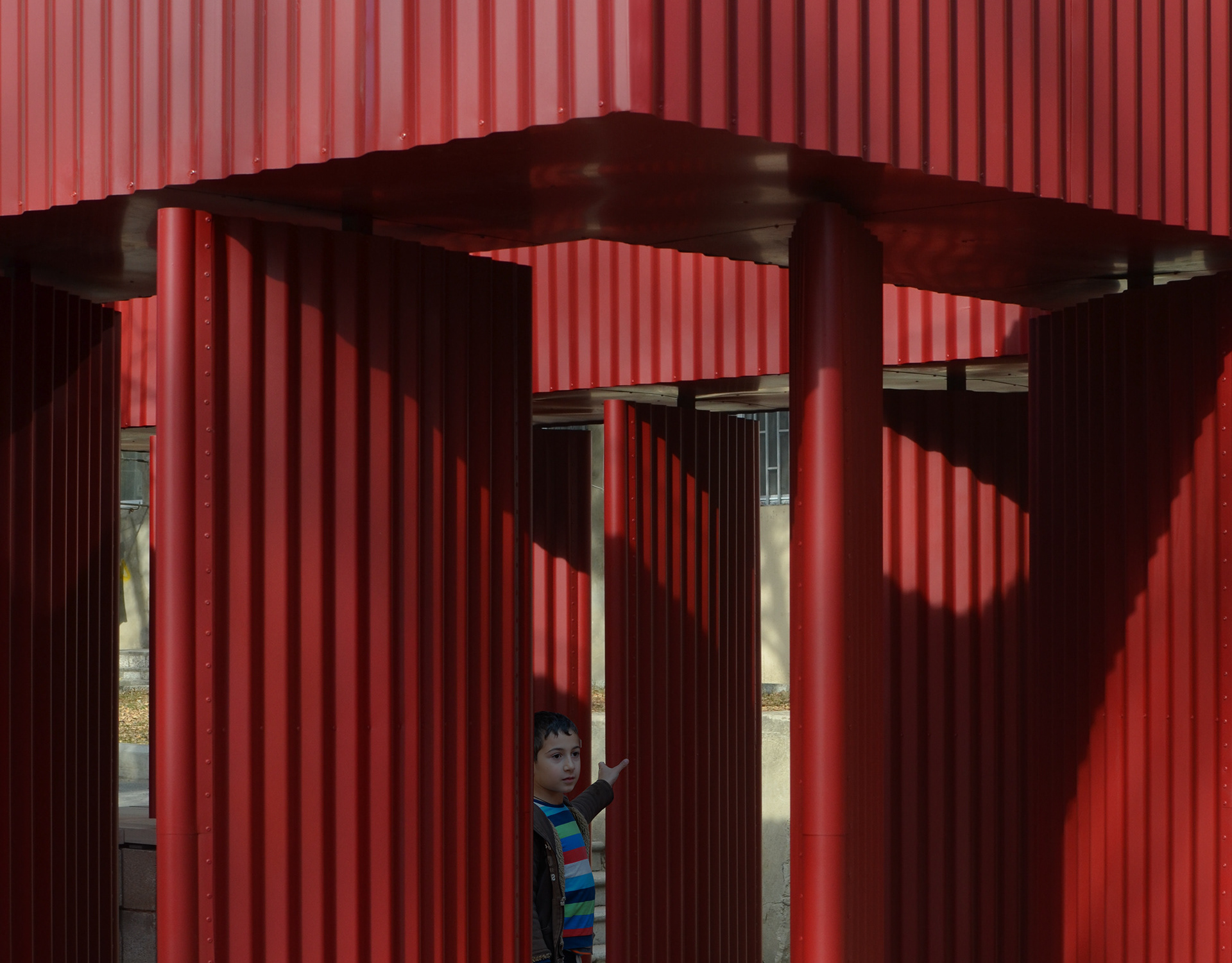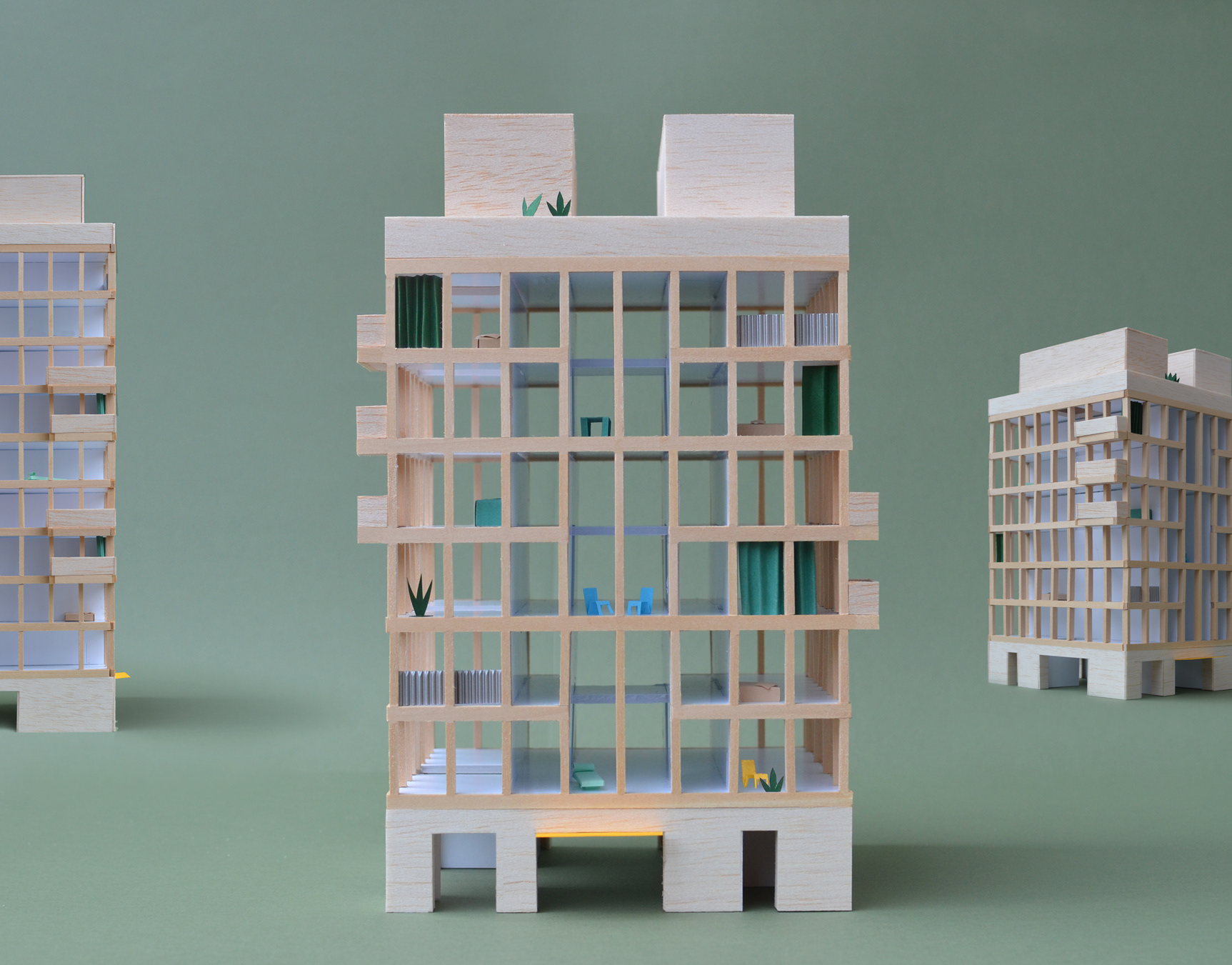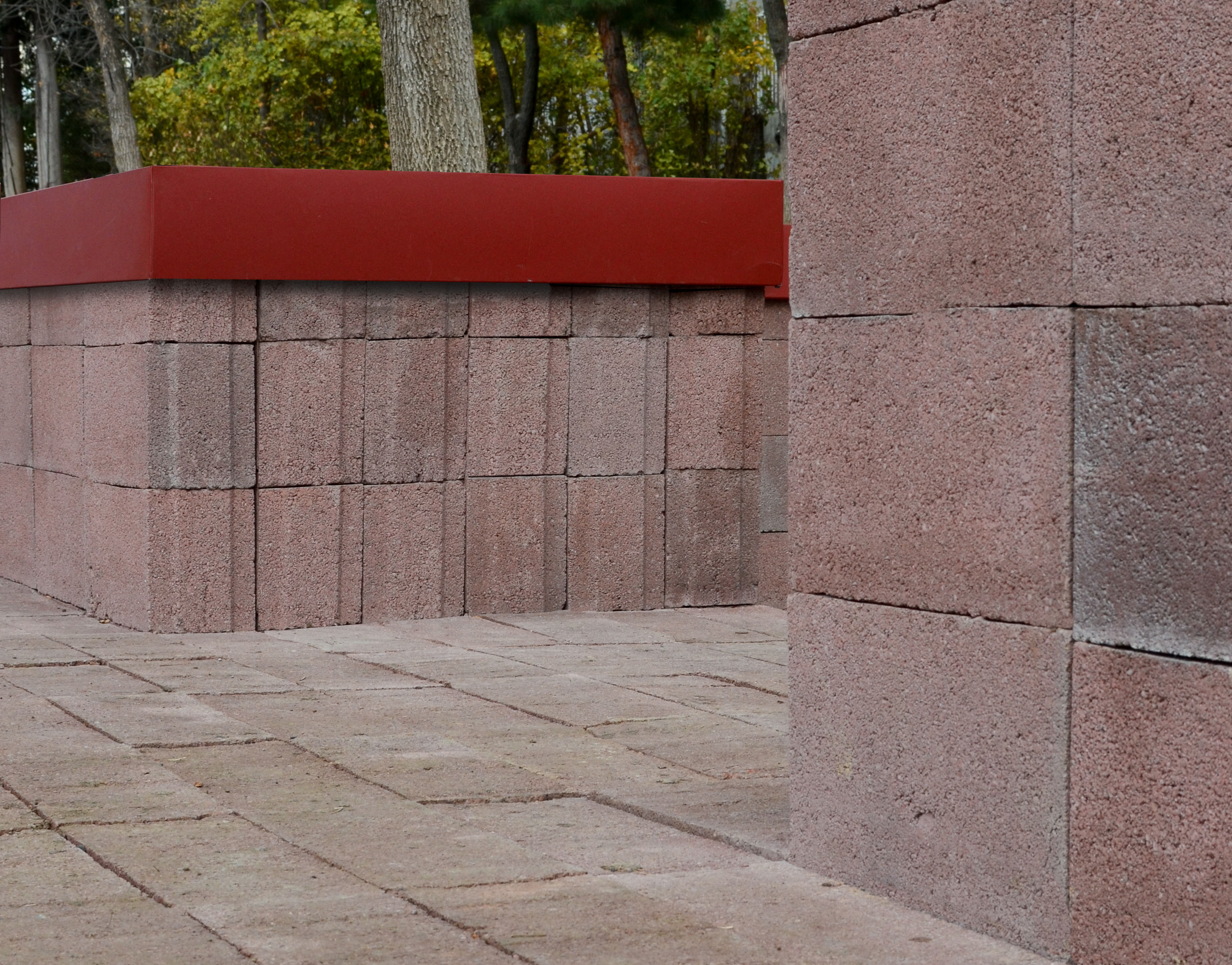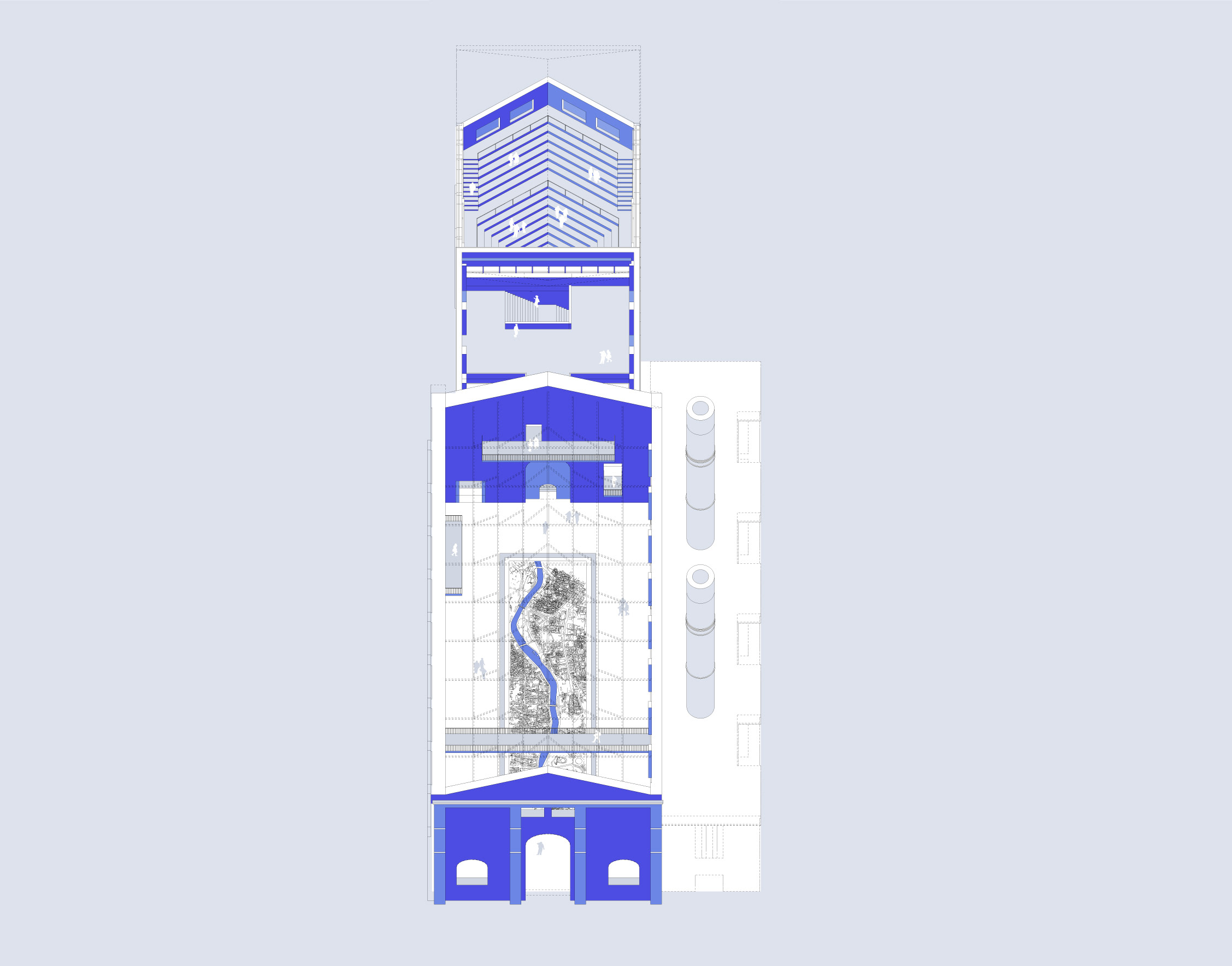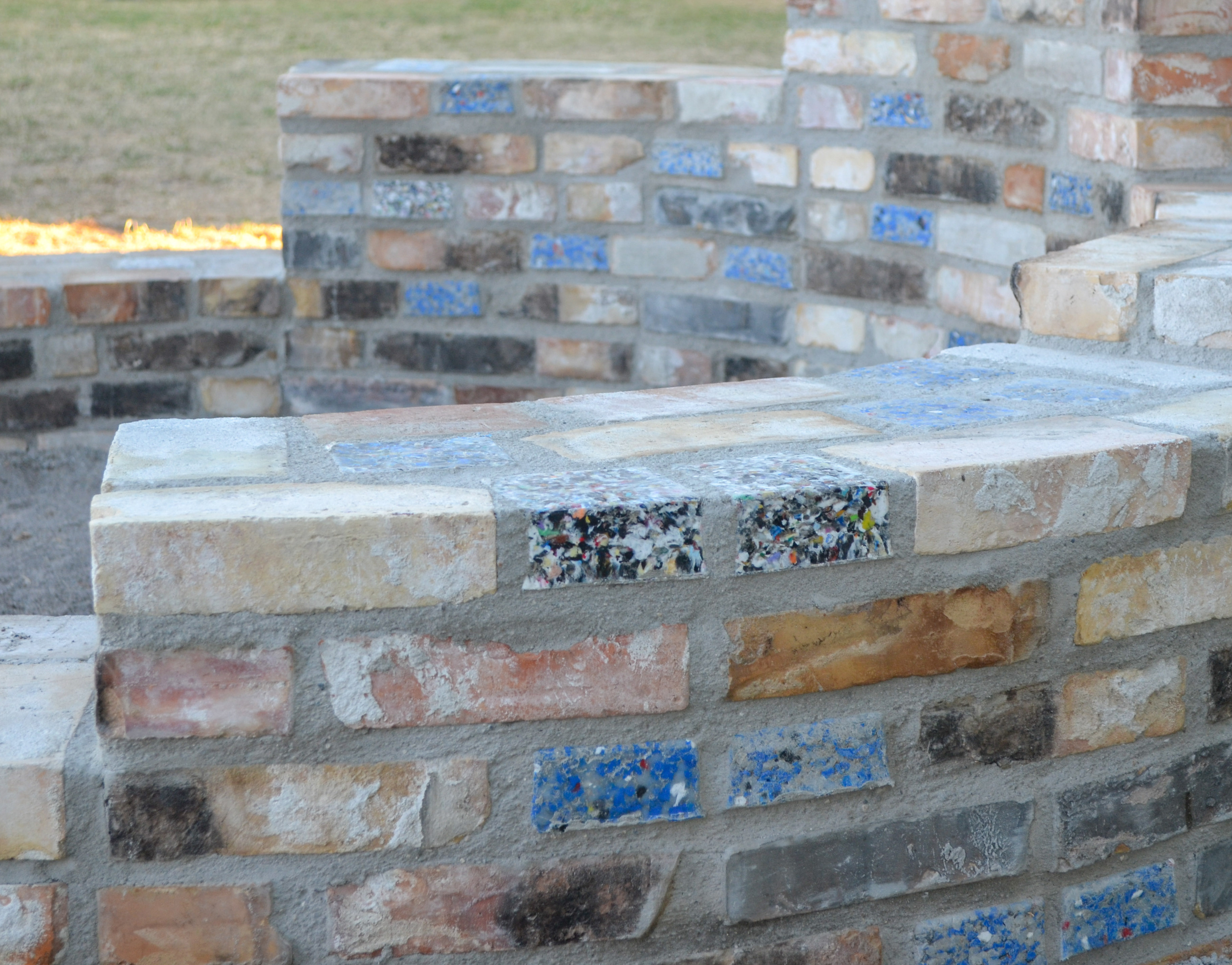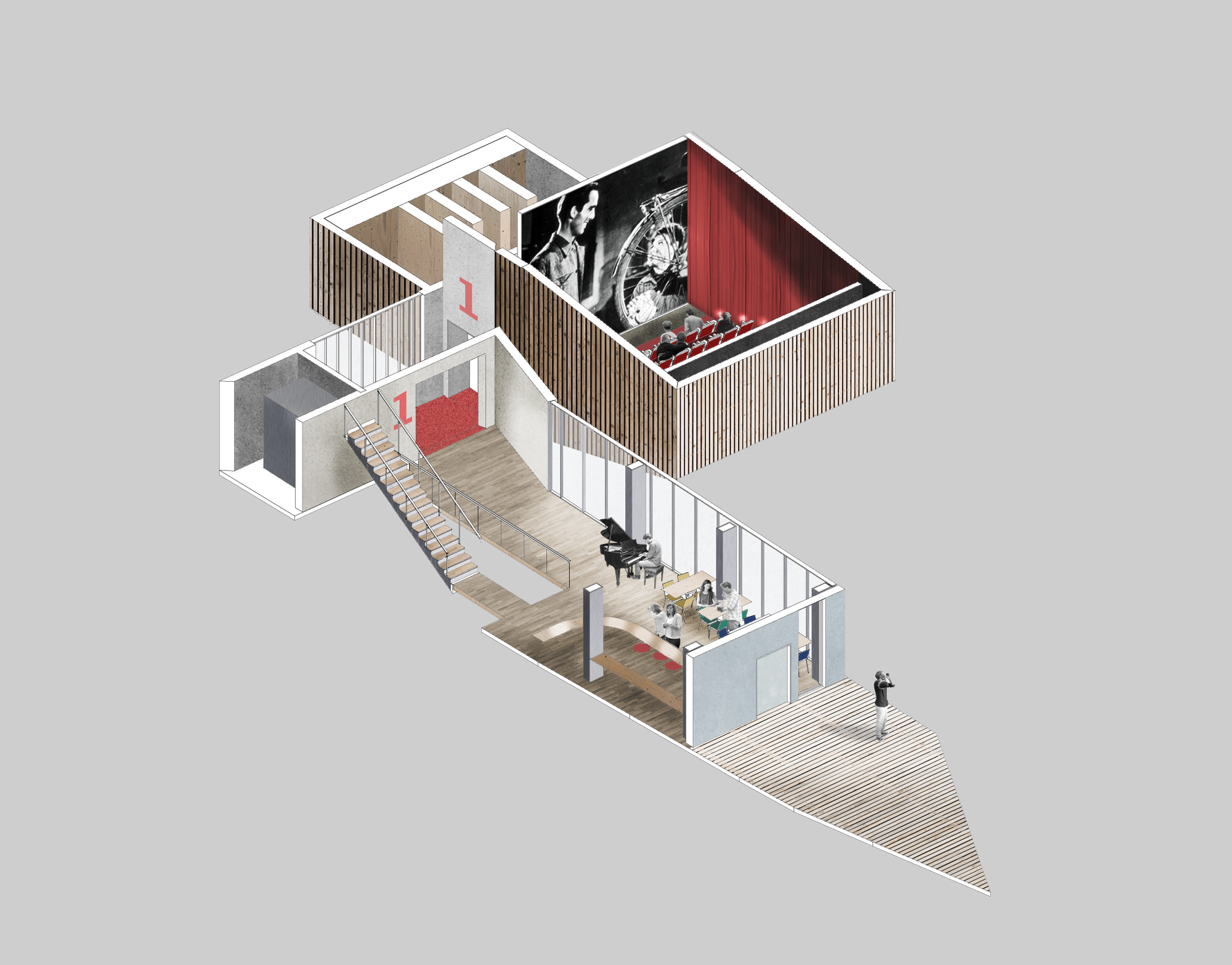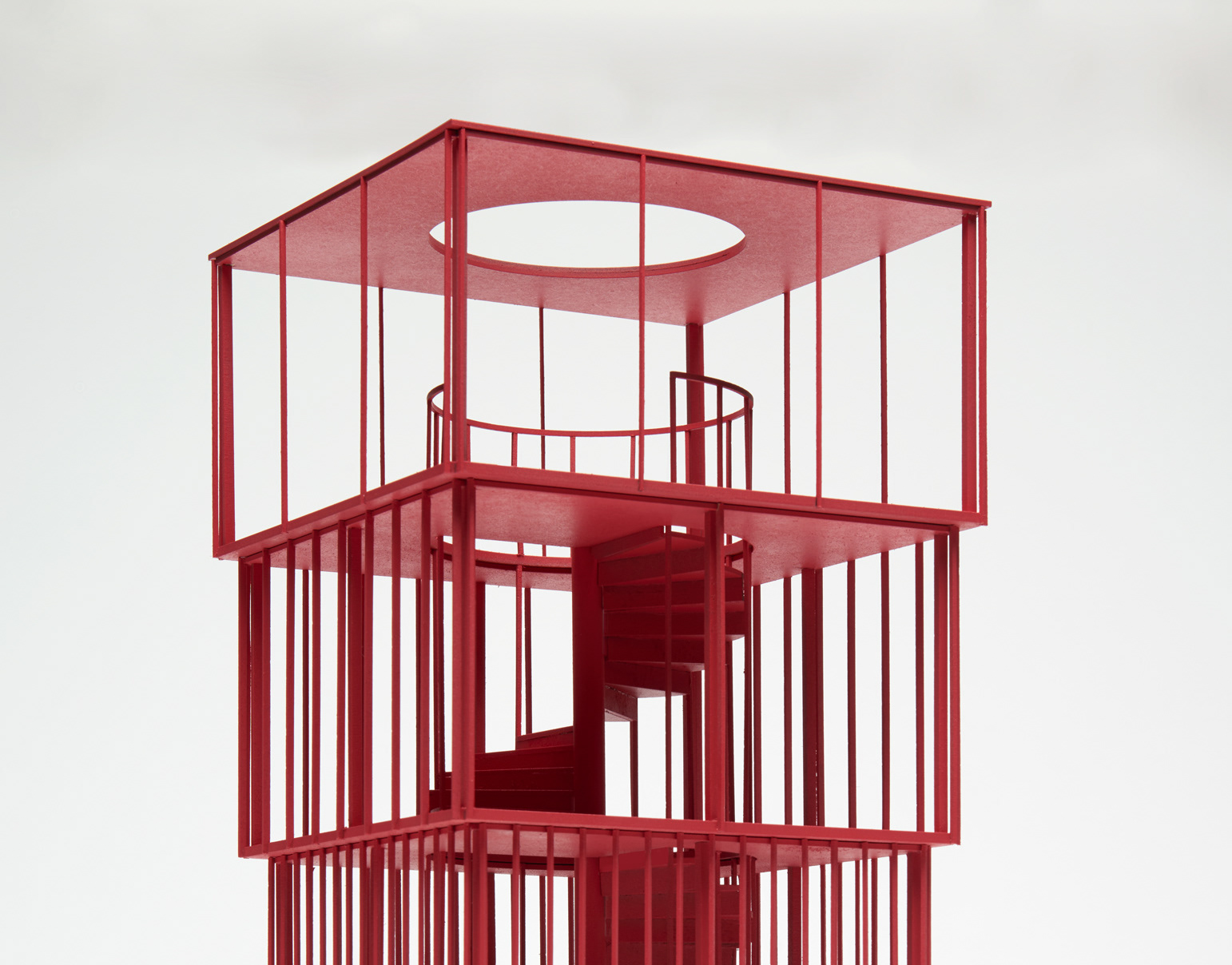‘Veneer of Solidity’ explores the vertex of art and architecture. How do the surfaces of art meet architecture’s demand for solidity and spatiality? How can the requirements of an art pavilion transcend the temporal aesthetic typically achieved?
The proposal challenges the purported prioritising of ‘truth’ and ‘purity’ in architecture. In painting we manipulate one material (paint) to represent another (skin, cloth, wood…) and as a viewer we readily embrace this manipulation, suspending judgement for experiential effect. In architecture we scorn the manipulation of materials, demanding honesty and tactility - why? Let us embrace the pavilion for its experiential effect and empower the viewer to suspend their belief in architecture - let printed veneer become marble and let marble become veneer.
The predilection of marble, for its solidity, its touch, its pattern, its chill, has been manipulated and commodified to the point that its printed representation is applied to everything from phone cases to fabrics. This paradigm echoes the relationship between art, architecture and their materials - a desire for the ‘honesty’ of materials is in a perpetual conflict with the realities of the economy and its demands.
Marble, the epitome of solidity and quality, meets print, the reproducible representation of something else.
Honourable mention CHART 2016 (with Catherine Yarwood)


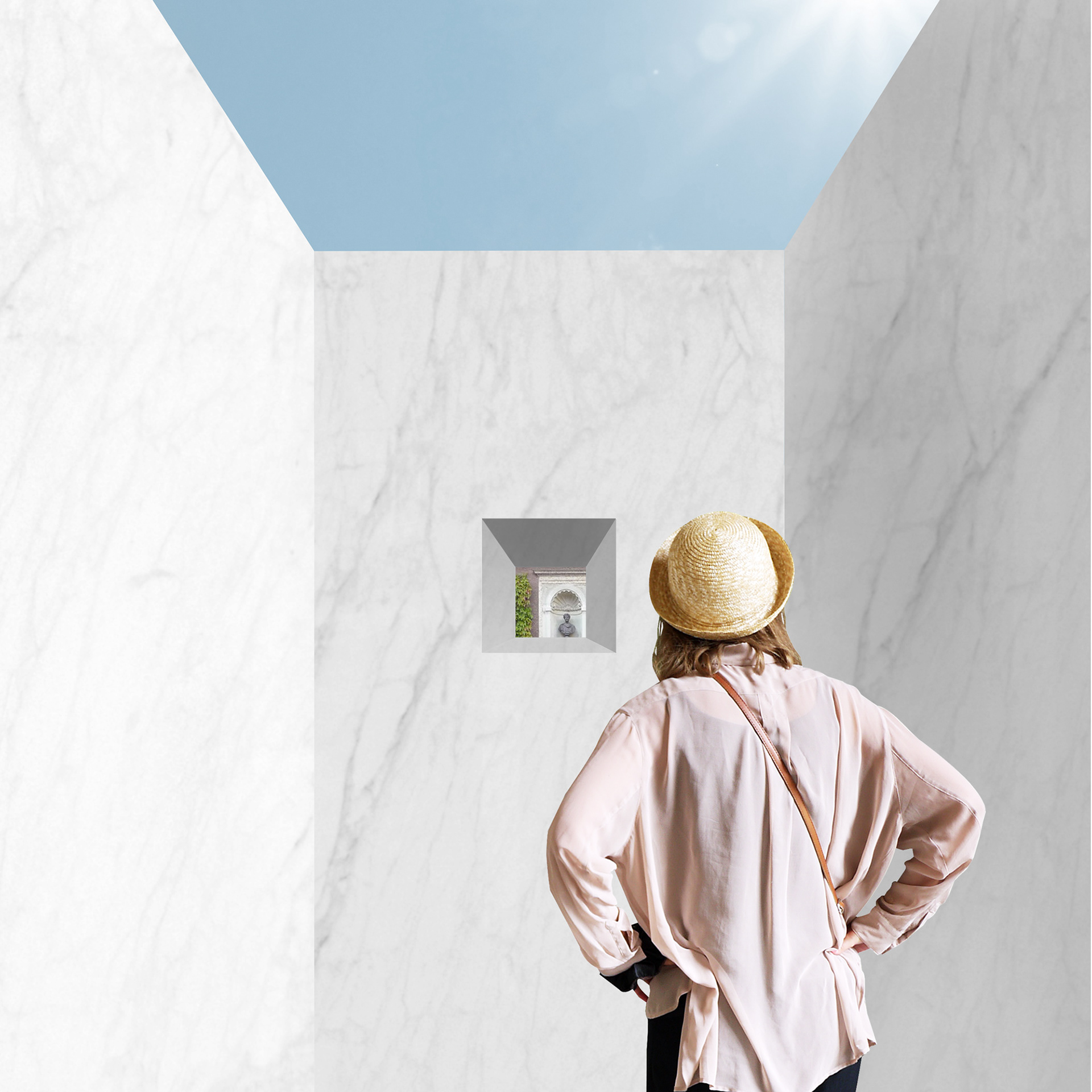
The pavilion’s form fills the maximum volume defined, creating a solid block of marble. This block is then carved out to create a void in each face of the form, each responding to a distinct moment of architectural experience in a gastronomic setting - to Order, Collect, Ascend and See.
As the monolith is approached, only a small aperture at the top of the block hints towards the its true purpose. Moving around the object reveals a second aperture that invites viewers to place an order for food and drinks, across a marble stair. The sounds of a busy kitchen echo from deep with the volume, but the visual exposure is limited. Moving to the third side of the mass reveals the collection opening, where a single meal is presented as an artwork in itself, framed by an impossible marble mass and uninterrupted by external distractions. Here the pavilion’s function as restaurant is symbiotic with its desire to be both architecture and art. A fracture in the fourth face of the slab of marble invites viewers into a dark passageway, which slowly reveals the immaterial truth of the structure. The viewer ascends a stair past the points of order and collection, reaching a walled but external platform lit from above. Here the viewer finds a bench that faces into a marble wall, exposing the veneer of architecture, and the rediscovery of the first aperture which frames the facade of the Kunsthal Charlottenborg through a metre deep void, thus revealing the solidity of art.



